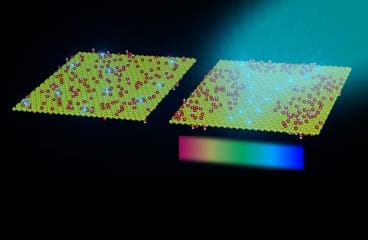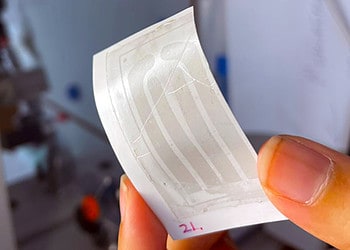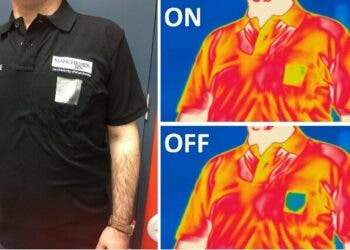Graphene, a 2-D array of carbon atoms arranged in a hexagon shape, is one of the most researched material today. We’ve written extensively before about its properties and uses, and indeed the future seems to belong to graphene where it’s sure to dominate the electronics industry. Before this can happen, however, graphene production and manipulation needs to become cheap and efficient. A new method developed at MIT requires much less energy to treat graphene, making it much cheaper, while providing a solid footing for the material to take-off in mainstream industry. Moreover, the resulting graphene sheets have been found to be better than those produced by current, expensive methods.
Treating graphene

Graphene by itself lacks some key electrical properties to reach its full potential. Typically, scientists dope graphene sheets with oxygen atoms – this is done by treating the graphene with harsh chemicals at high temperatures (700 to 900 degrees Celsius), which gobbles up a lot of energy. Furthermore, the treatment leaves oxygen atoms unevenly distributed across the graphene sheets causing performance issues.
MIT professors Jeffrey Grossman and Angela Belcher, along their doctoral students, devised a new treating method for graphene that involves much lower temperatures – just 50 to 80 degrees Celsius. This low temperature approach arranges the oxygen atoms in clusters, leaving areas of pure graphene between them. This helps create a more orderly structure, leading to better electrical properties.
“We’ve been very interested in graphene, graphene oxide, and other two-dimensional materials for possible use in solar cells, thermoelectric devices, and water filtration, among a number of other applications,” says Grossman, the Carl Richard Soderberg Associate Professor of Power Engineering.
A better way to make graphene
The orderly structure thus creates oxygen clusters that insulate current, while the graphene pure areas in between freely conduct. In fact, the researchers claim the electrical resistance dropped four to five orders of magnitude, all through a method that is more environmentally friendly since it uses much less energy and disposes of harsh chemicals extensively used by other methods.
Another plus is that the pure graphene regions essentially work as quantum dots which are great light absorbents.
“It produces a 38 percent improvement in the collection of photons,” Grossman says, compared to untreated graphene oxide, “which is a significant improvement that could be important for its use in a number of applications, such as solar cells.”
Graphene solar cells are being researched thoroughly, and the MIT method may provide a means to further increase efficiency. Besides solar cells, the scientists envision the method becoming very useful for producing graphene destined for thermoelectric devices, solar thermal fuels, and desalination filters.
“It is surprising that new processing regimes are still being identified,” says Mark Hersam, director of Northwestern University’s Materials Research Center, who was not involved in this work. This research “shows that there is still much work to be done on fully understanding and exploiting graphene,” he says.
The method was described in a paper published in the journal Nature Chemistry.






